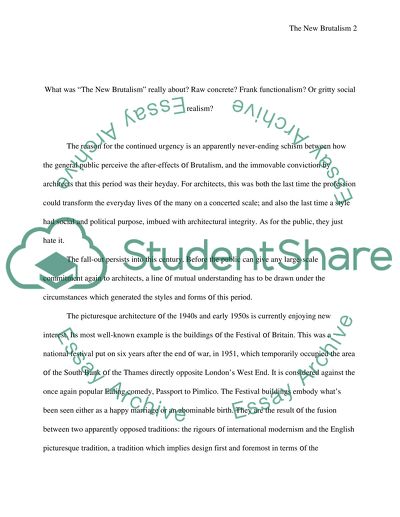Cite this document
(“What Was The New Brutalism Really About Essay Example | Topics and Well Written Essays - 1750 words”, n.d.)
Retrieved from https://studentshare.org/miscellaneous/1520386-what-was-the-new-brutalism-really-about
Retrieved from https://studentshare.org/miscellaneous/1520386-what-was-the-new-brutalism-really-about
(What Was The New Brutalism Really About Essay Example | Topics and Well Written Essays - 1750 Words)
https://studentshare.org/miscellaneous/1520386-what-was-the-new-brutalism-really-about.
https://studentshare.org/miscellaneous/1520386-what-was-the-new-brutalism-really-about.
“What Was The New Brutalism Really About Essay Example | Topics and Well Written Essays - 1750 Words”, n.d. https://studentshare.org/miscellaneous/1520386-what-was-the-new-brutalism-really-about.


